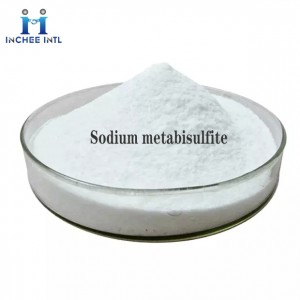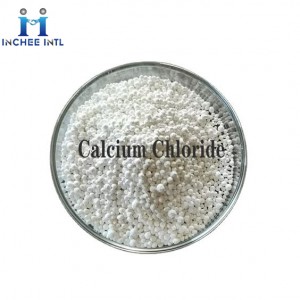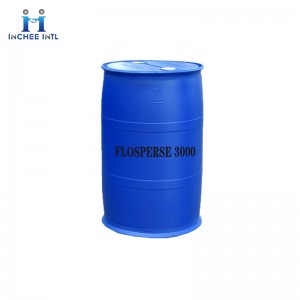-

Manufacturer Good Price HIGH RANGE WATER REDUCER(SMF)
HIGH RANGE WATER REDUCER(SMF) is a water -soluble anion high -polymer electrical medium. SMF has a strong adsorption and decentralized effect on cement. SMF is one of the well -schizes in the existing concrete water reducing agent. The main features are: white, high water reducing rate, non -air induction type, low chloride ion content is not rusted on steel bars, and good adaptability to various cement. After using the water reducing agent, the early intensity and permeability of the concrete increased significantly, the construction properties and water retention were better, and the steam maintenance was adapted.
-

Manufacturer Good Price SEAWEED EXTRACT POWDER 25%(powder /flake) CAS:92128-82-0
Seaweed extract is black powder, which is special flavor of seaweed. Contains sea alginic acid, calcium, iron, iodine, vitamin B, twenty carbonic acid, various amino acids and konabine (that is, kelpine), taurine, beetine, etc. Because it contains more sodium glutamate, it has the umami flavor of sodium glutamate.
Main ingredients: contain alginate, calcium, iron, iodine, B vitamin, twenty -carbonic acid, various amino acids and konbinine (that is, kelpine), taurine, sweet pyrine, etc.
CAS: 92128-82-0
-

Manufacturer Good Price Sodium metabisulfite CAS:7681-57-4
Sodium metabisulfite : (industrial grade) Sodium metabisulfite (chemical formula: Na2S2O5) appears as a white crystalline or powder solid with a slight sulfur odor. It is toxic upon inhalation and can strongly irritate skin and tissue. It can be decomposed to release toxic oxide fumes of sulfur and sodium upon high temperature. It can be mixed with water to form a corrosive acid. It is generally used as disinfectant, antioxidant, and preservative agent as well as a laboratory reagent. As a kind of food additive, it can be used as a preservative and antioxidant in food. It can also be applied to the wine and beer making. Moreover, it can be used to sanitize the equipment of homebrew and winemaking as a cleaning agent. It also have various kinds of other applications, e.g. being applied to photography, as an excipients in some tablets, for water treatment, as a source of SO2 in wine, as a bactericide and as a bleaching reagent as well as reducing agent. It can be manufactured through the evaporation of a sodium bisulfite which has been saturated with sulfur dioxide. It should be warned that sodium metabisulfite has certain acute effects on the respiratory system, eyes and skin. In severe case, it can cause breathing difficulty and even pulmonary damage which finally leads to death. Therefore, effective protective measures and attention should be taken during the operation.
Sodium metabisulfite CAS 7681-57-4
Product Name: Sodium metabisulfiteCAS: 7681-57-4
-

Manufacturer Good Price BIT20%-T CAS:2634-33-5
BIT-20 is a new and efficient broad-spectrum sterilization preservatives. BIT-20 is a high-efficiency sterilizer for water-based products, especially for high temperature environment and alkaline system. BIT-20 cutting liquid preservatives can effectively prevent the metal processing industry from decomposing the metal processing industry in the metal processing industry. The viscosity of the processing industry is reduced and the pH value changes. The anaerobic bacteria in the processing solution have a good suppression and killing effect of the breeding and reproduction of the original bacteria.
CAS: 2634-33-5
-

Manufacturer Good Price Methylene Chloride CAS:75-09-2
Methylene Chloride is a compound generated by two hydrogen atoms in methane molecules, and molecular CH2CL2.Methylene Chloride is colorless, transparent, heavier, and volatile liquid. It has a smell and sweetness similar to ether. It does not burn. Methylene Chloride is slightly soluble in water, and it dissolves with most commonly used organic solvents. It can also be dissolved in any proportion with other chlorine-containing solvents, ether, ethanol, and N-di metamimamamide. Methylene Chloride is difficult to dissolve in liquid ammonia at room temperature, which can be quickly dissolved in phenol, aldehyde, ketone, triathrin, tororine, cycamine, acetylcetate. The phase Chemicalbook is 1.3266 (20/4 ° C). The melting point -95.1 ° C. Boiling point 40 ° C. Fully low -boiling point solvents are often used to replace flammable petroleum ether, ether, etc., and can be used as local anesthesia, refrigerant and fire extinguishing agent. The spontaneous combustion point is 640 ° C. Decoction (20 ° C) 0.43MPa · s. The refractive index nd (20 ° C) 1.4244. Critical temperature is 237 ° C, and critical pressure is 6.0795MPa. HCL and traces of light are generated after thermal solution, and the water is heated for a long time to generate formaldehyde and HCL. Further chloride, CHCL3 and CCL4 can be obtained.
CAS: 75-09-2
-

Manufacturer Good Price Calcium Chloride granule anhydrate CAS:10043-52-4
Calcium Chloride granule anhydrate is white porous melting or particles. Easy to solve. The melting point is 782 ° C and the density is 2.15g/cm3. The boiling point is higher than 1600 ° C. Calcium Chloride granule anhydrate is easy to dissolve in water and releases a lot of heat.Calcium Chloride granule anhydrate is also soluble in ethanol and acetone. The common is the six water chlorine chloride CACL2 · 6H2O, colorless three -way crystals, easy to solve, bitter and salty, density 1.71g/cm3, Chemicalbook29.92 ℃ soluble in crystal water. When heating to 30 ° C, Calcium Chloride granule anhydrate loses four molecular water to form a two -molecular water compound (CACL2 · 2H2O). Calcium Chloride granule anhydrate is a white porous and hygroscopic solid. Continue heating can generate a water compound. When the temperature is higher than 200 ° C, water -absorbent is completely hygroscopic. Calmin and ammonia reaction generate ammonia compound CACL2 · 8NH3.
CAS: 10043-52-4
-

Manufacturer Good Price CW40-716 CAS:24937-78-8
CW40-716 Lotion is a high-viscosity adhesive.CW40-716 has the characteristics of fast initial adhesion, strong adhesion, good mechanical stability, high resistance to Zhang strength and creep resistance. Therefore, the CW40-716 lotion is widely used, and CW40-716 is also suitable for some special adhesives, such as UV-optical curing surfaces with cardboard bonding, PVC film and wooden boards.
Architecture: CW40-716 Lotion is compatible with various polymers, solvents, plasticizers and other additives. When used in the woodworking industry, it can be mixed with polytharine or isophyl acid ester to make the product great water resistance. In addition, CW40-716 Lotion has a large response to the viscosity of plasticizers or solvents.
CAS: 24937-78-8
-

Manufacturer Good Price Sulfamic acid CAS:5329-14-6
Sulfamic acid is a colorless, tasteless and non -toxic solid strong acid. The aqueous solution has the same strong acid properties as hydrochloric acid and sulfuric acid. The toxicity is very small, but the skin cannot be exposed for a long time, let alone enter the eyes. Because the properties of strong acids are also called solid sulfuric acid, it can replace sulfuric acid and make a stable crystal at a very pure room temperature. Its packaging, storage, and transportation are very convenient. The solid ammonia chemicalbook sulfonic acid is good at the dry room temperature environment, does not absorb moisture, does not volatilizes, soluble in water, can be ionized in the aquatic solution, is medium acidic, and can be used as a time titer -to -time acid standard solution. Slightly soluble or insoluble in organic solvents, difficulty soluble in ether, soluble in liquid nitrogen, ethanol, methalmam, acetone. Because of its excellent properties, it is widely used in awareness, chlorine stabilizer, sulfide, nitrate, disinfection agent, flame retardant, herbicide, synthetic sweetener and catalyst.
Chemical properties: white trapezi crystal crystals, odorless, not volatile, and not moisture. Soluble in water and liquid ammonia, slightly soluble in methanol, insoluble in ethanol and ether, and insoluble in carbonide and liquid sulfur dioxide.CAS: 5329-14-6
-

Manufacturer Good Price Potassium Hydroxide CAS:1310-58-3
Potassium Hydroxide : Potassium hydroxide (chemical formula :KOH, formula quantity :56.11) white powder or flake solid. The melting point is 360~406℃, the boiling point is 1320~1324℃, the relative density is 2.044g/cm, the flash point is 52°F, the refractive index is N20 /D1.421, the vapor pressure is 1mmHg(719℃). Strong alkaline and corrosive. It is easy to absorb moisture in the air and deliquescence, and absorb carbon dioxide into potassium carbonate. Soluble in about 0.6 parts hot water, 0.9 parts cold water, 3 parts ethanol and 2.5 parts glycerol. When dissolved in water, alcohol, or treated with acid, a large amount of heat is generated. The pH of 0.1mol/L solution was 13.5. Moderate toxicity, median lethal dose (rats, oral)1230mg/kg. Soluble in ethanol, slightly soluble in ether. It is extremely alkaline and corrosive
Potassium Hydroxide CAS 1310-58-3 KOH;UN NO 1813; Hazard level: 8
Product Name: Potassium HydroxideCAS: 1310-58-3
-

Manufacturer Good Price FLOSPERSE 3000 brand:SNF CAS:9003-04-7
FLOSPERSE 3000:SNF brand of anionic compounds.FLOSPERSE 3000 is a low -molecular weight polyacryonal, which is usually used for high -solid -phase decentralization system.FLOSPERSE 3000 is a neutral process auxiliary. Used to obtain high solid phases under low viscosity. With a wide pH value and temperature range, it has excellent flowing controllability. This product is very effective in clay, kaolin, calcium carbonate and other pigments, as well as in coatings containing these paint.
CAS: 9003-04-7






